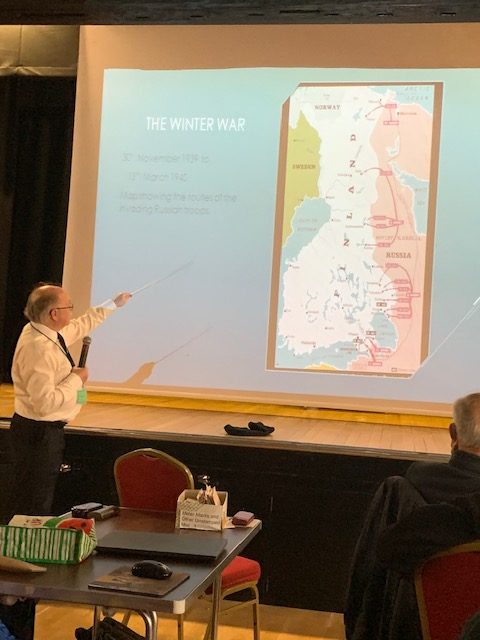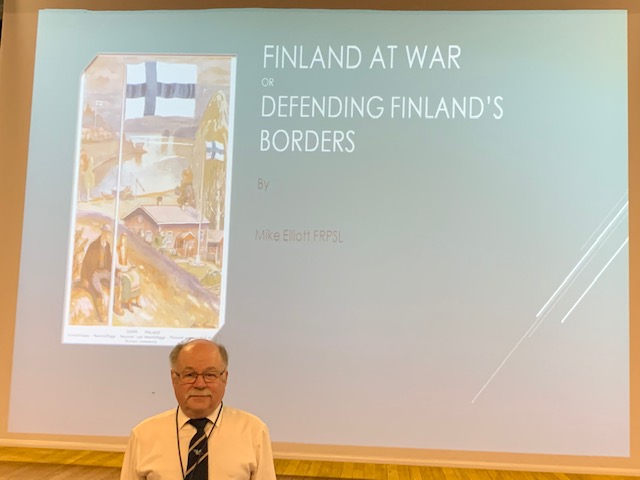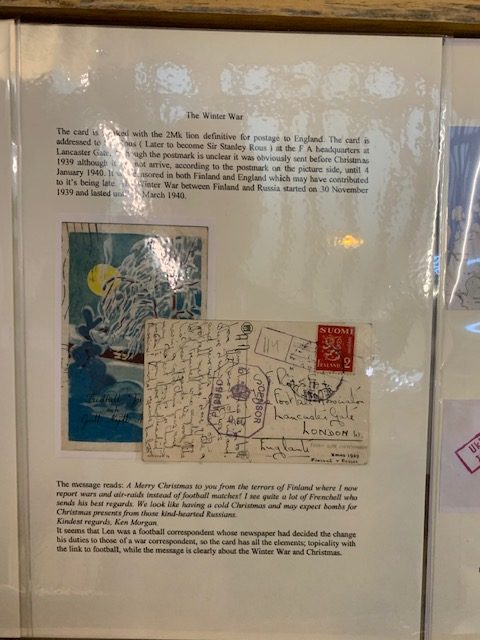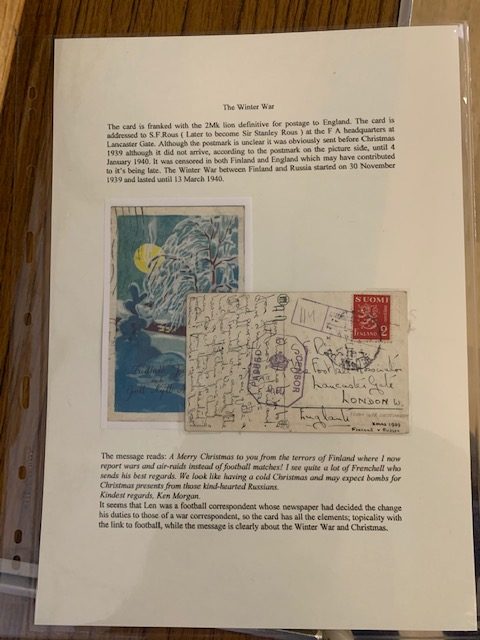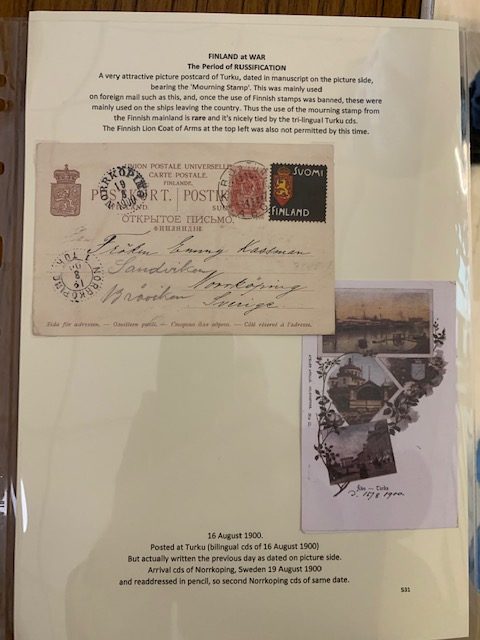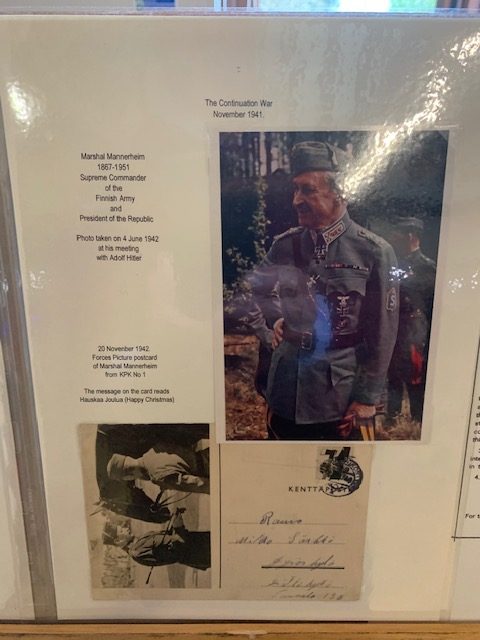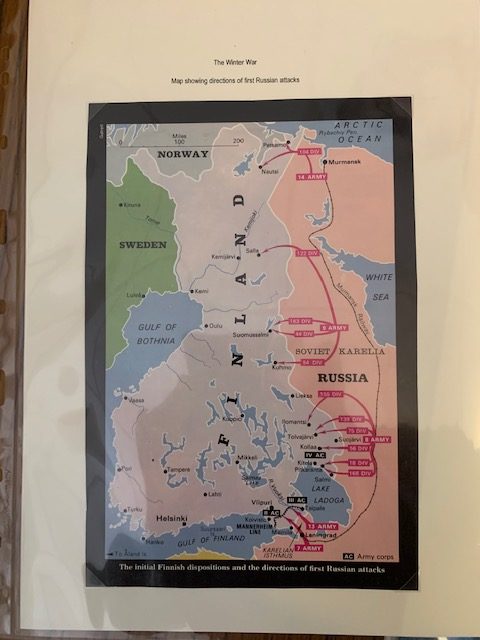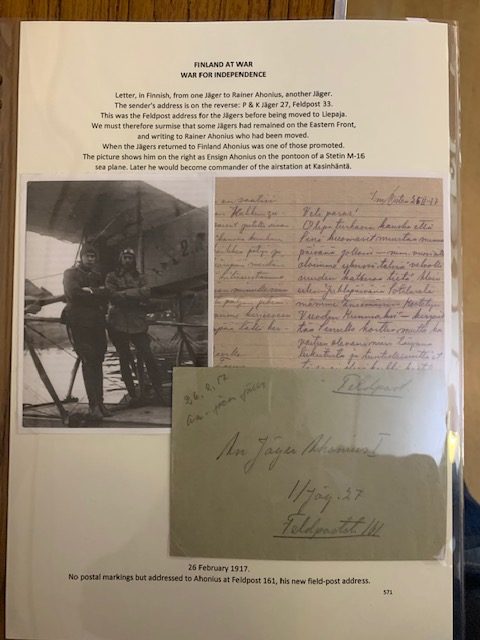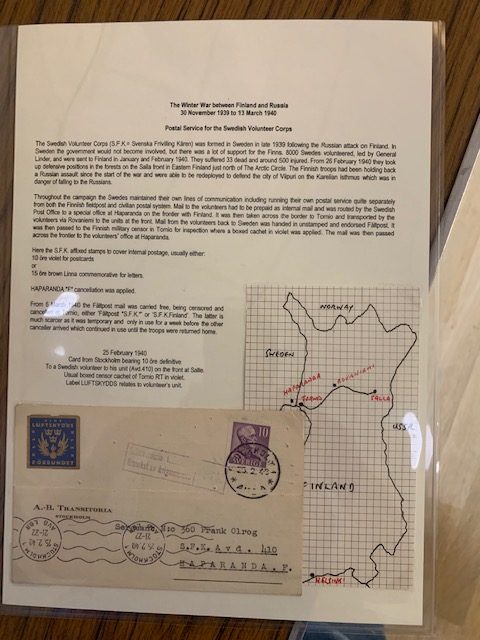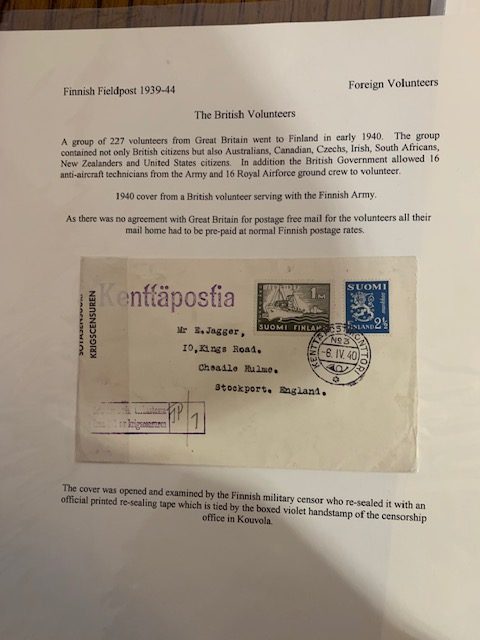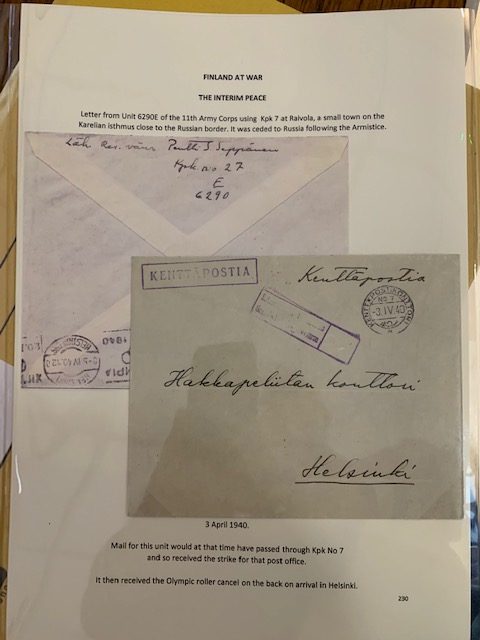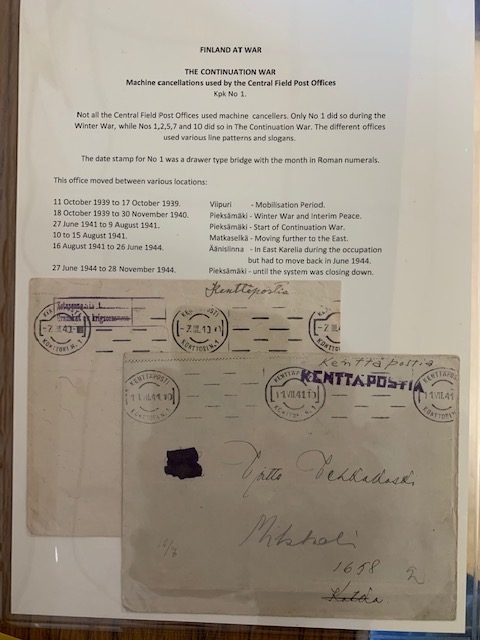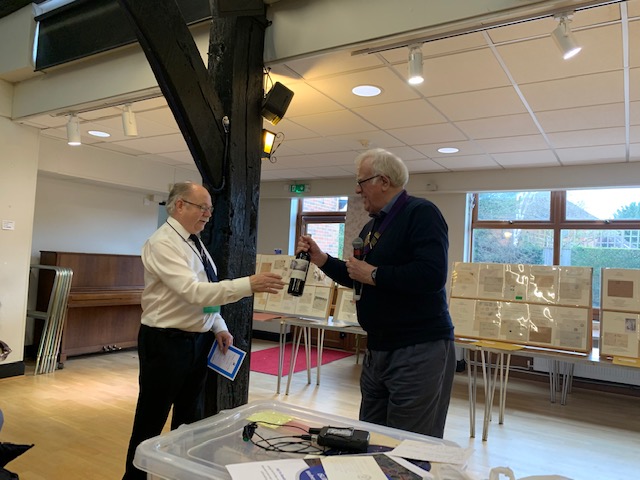Michael Elliott FRPSL from Sussex visited us in February to tell us about Finland at War. In his introduction, he emphasised that his display was not about World War II, but about the 1939 Winter War between Finland and Russia and the 1941-44 Continuation War with the same combatants. On each occasion, despite early gains, Finland lost to Russia.
Finland had a well-trained Army, and in 1928, 1937 and 1939 they conducted military exercises. These ensured that there was a well-established Field Post system (Kentta Posttia). It had its own cachets (translated for us) and we saw some covers showing registration cachets.
Michael explained that the Finnish Flag and the Finnish War Flag are different. In wartime they use censorship, and we saw example covers. In the Winter War there were specific cachets for the various regiments and the Navy. Some civilians took refuge in Northern Norway, where they were interned. The winter in 1939/40 was hard but saw some interesting changes of employment. Football reporters were sent to be War Correspondents!
During the Winter War, propaganda leaflets were dropped on the Russians, and bombing of Russian Bases was reported in the Daily Telegraph.
Finland was not alone, several countries sent volunteers, including Britain. Sweden sent about 8,500 men to help and decided to run their own Forces Post. Later in the War, postage for soldiers was free. We were shown the scarce SFK Finland cancel from late in the war. The separate postal system closed at the end of the War. British volunteers included the London Fire Brigade driving a Fire Engine all the way to Finland to help douse the fires.
The War officially ended in March 1940. A philatelic product was an unofficial bisect, which was shown on cover. As part of the Treaty, the Forces Post ended.
In 1941 Churchill declared war on Finland because of pressure from Russia, but no shots were ever fired, it was just a gesture to satisfy the Russians.
In June 1941 Finland resumed the war against Russia – known as the Continuation War. The aim of the Continuation War was to recapture Eastern Karelia. We were shown a range of material that included: a selection of roller and cds cancels; a Registered Parcel card and a Registered letter to the Netherlands. It was noted that authorisation was needed to send stamps abroad. We also saw mail from Turku; a cover with a Naval Censor cachet; a chemical stripe on a card, which was used for checking for secret writing. A number of Estonian volunteers joined the Finns, but few went back, as Russia took over Estonia.
In September 1944 the Continuation War ended, but the Finns had to remove the Germans from Finland as part of the Treaty conditions. Many Finns returned to Finland at the end of WWII from Russian-occupied territory.
Our Chairman, Patrick Reid thanked Michael for his excellent display and commented that we had all learned a great deal.
